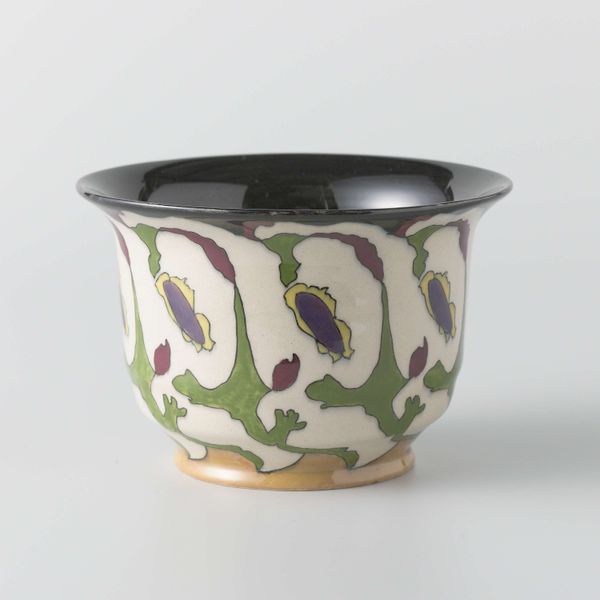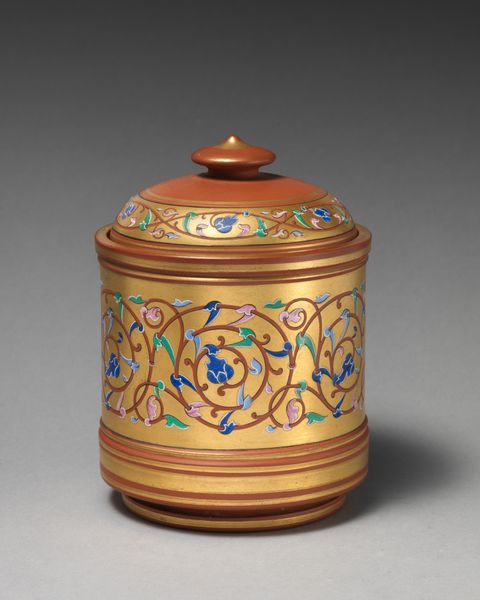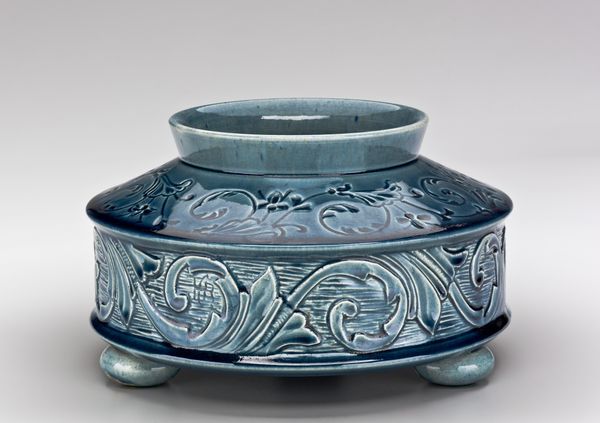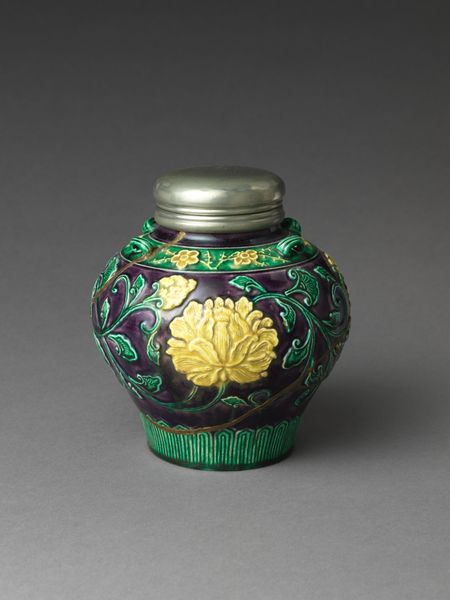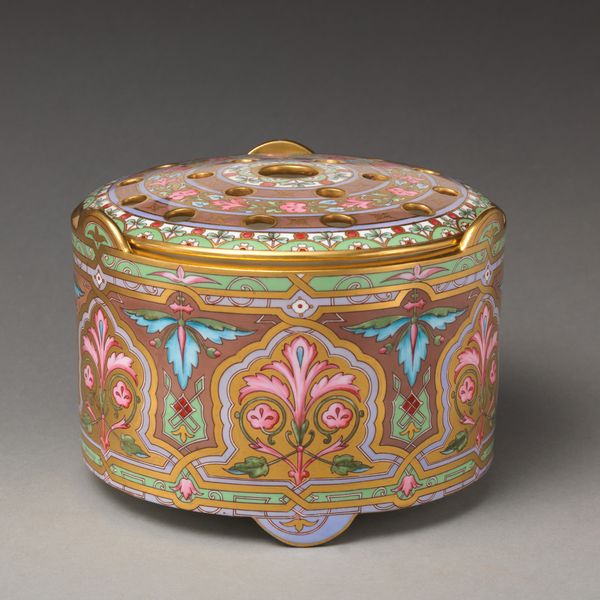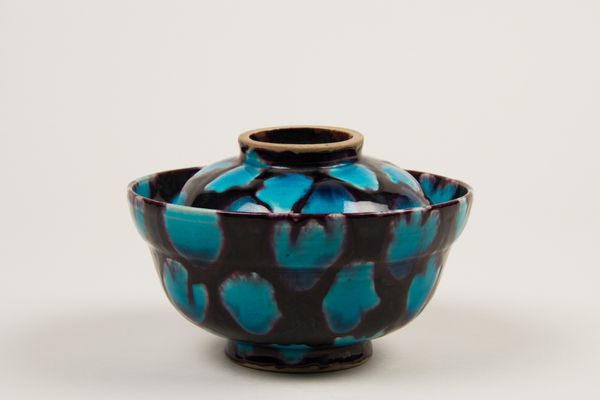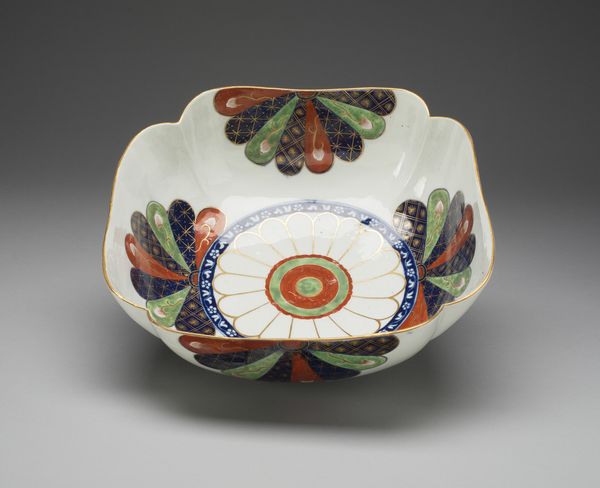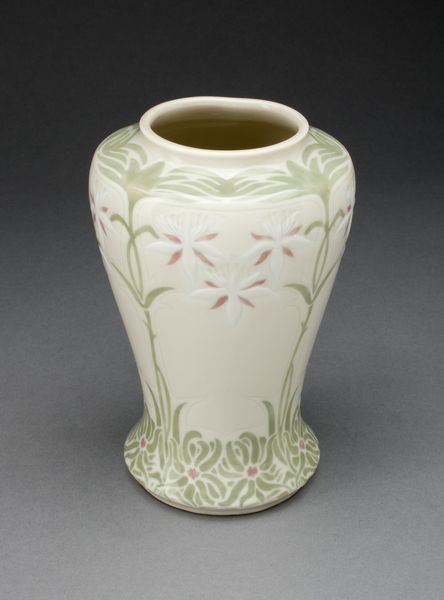
ceramic
#
product studio photography
#
circular oval feature
#
egg art
#
product promotion photography
#
product fashion photography
#
ceramic
#
vase
#
retro 'vintage design
#
japan
#
stoneware
#
wash background
#
ceramic
#
cartoon theme
Dimensions: 6 1/4 x 9 3/4 x 9 3/4 in. (15.88 x 24.77 x 24.77 cm)
Copyright: No Known Copyright
Curator: This vase, crafted by Kinjō Jirō, likely around the 20th century, resides here at the Minneapolis Institute of Art. It’s a lovely piece of ceramic work. What are your initial thoughts? Editor: The first thing that strikes me is its spherical form and the bold band of floral ornamentation, those swirling leafy patterns recall art nouveau aesthetics with a stylized yet balanced visual rhythm. Curator: It’s stoneware, and that robust material choice is critical. Stoneware is fired at high temperatures, creating a dense, durable, and non-porous vessel perfect for everyday utility and potentially a global consumer market, considering its durability. What does that stylistic flourish signify to you? Editor: Formally, I see an interesting play of symmetry and repetition broken only by minor variations in the painted floral details. The choice of earthy green tones and burnt orange creates a harmonic, grounding color scheme that emphasizes balance. It's as if the vessel wants to visually communicate about natural and organic connections through simplified geometric shapes. Curator: Exactly! And look at the construction itself. How was the clay sourced? Who mixed and prepared it? Consider the potter’s labor in shaping this form, and then the artisans painting each precise line in these looping vine decorations – we are not just viewing “art,” but evidence of organized and skilled craft production, and quite possibly production for retail. Editor: The decoration adds meaning, creating a sense of vibrant life within the static art form. It speaks to the constant cycles of renewal that occur in nature and emphasizes notions of continuous growth and interconnectedness, through its patterns. Curator: Perhaps! And even further – where was it meant to be sold? Was it only intended for the Japanese home, or was there a clear attempt to create ware that would have greater cross-cultural appeal with simplified forms? Editor: That’s certainly an insightful point; by embracing recognizable decorative tropes and favoring symmetry alongside controlled use of materials, its accessible aesthetic can have mass-cultural appeal to various demographics. Curator: So in summary, beyond its lovely appearance, this vase illuminates not just form and function but the social organization of craft in a globalized world. Editor: Yes, a beautifully executed work and compelling case study on function, decoration, and universal design sensibilities.
Comments
No comments
Be the first to comment and join the conversation on the ultimate creative platform.
